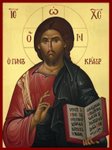In this, the final installment, I treat of the arguments against the GWDT and conclude with some reflections of my own. Here are the previous installments: Part 1, Part 2, and Part 3.
The GWDT has been the dominant paradigm of Pentateuchal studies since Wellhausen published Composition des Hexateuchs und der historischen Bücher A.T.s. in 1889.[1] There have been many opponents to the GWDT due to its highly subjective and artificial structure and from the conclusions that follow. Wellhausen proposed that the religion of Israel in its early forms was animistic and polytheistic[2]. It was not until much later with the final redactions of the Pentateuch and the preaching of the prophets that an ethical monotheism developed. As one can see, this reduces the history of early Judaism to nothing more than a “projection into the unknown and distant past of conditions prevailing in late ages”[3]. There are serious technical and philosophical problems with the GWDT that bring its correspondence with truth into question. In what follows, evidence undermining the GWDT will be presented.
A difficulty with the GWDT and its modern counterparts is the completely artificial character of its authorship spread over many centuries. Segal writes;
“Hebrew Literature, or any other literature all the world over, cannot show another example of the production of a literary work by such a succession of recurring amalgamations and such a succession of compilers and redactors centuries apart, all working by the same method, as attributed by the Theory to the formation of the Pentateuch[4].
Furthermore, reducing the entire Pentateuch into source fragments and traditions spread over a great deal of time reduces it to mere nonsense. There is an obvious unity that goes beyond simply a cut and paste-type of literature model. This is Revelation. Therefore, the whole is greater than the sum of the parts in a particularly unique way. There is an added component of the inspiration by the Holy Spirit that must be taken into account.
As stated above, the GWDT stands or falls on whether the first division of sources according to the naming of God. The problem arises when a particular divine name is found within a section that is purported to belong to a different source. Segal points out that in many instances in the Pentateuch the name used does not correspond with the appropriate source rendering the division by the names unreliable at best[5]. Furthermore, he demonstrates that in the Historical books (e.g., Judges, Samuel, Kings) of the Old Testament there are many examples of both YHWH and Elohim being used in such a manner that they can’t possibly be from different sources. Thus, other ancient Hebrew writers used the terms seemingly interchangeably in cases that cannot be ascribed to separate sources. Again, if the terms are used elsewhere interchangeably, how can they be used a criterion of division? Segal attributes the difference in usage to the purpose of variety in expression. Parallels exist in Ex 18 and 2 Sam 16 between “Jethro” and “the father-in-law” and “David” and “the king”, respectively[6].
Segal extends the use of literary variation to explain the main examples the adherents of the GWDT forward as examples of style and vocabulary differences which indicate separate sources[7]. First, the words and styles listed in Table 1 (here) are of the same dialect across the different sources. This is important because the GWDT uses particular words to assign a passage to a particular source. However, there is absolutely no proof that these lists are anything else but false, imposed criteria. How can one confidently state that a given word is always used by one source and not the other if any word could be used by any source? Isn’t it much more likely that the author is varying usage? He continues by analyzing pairs of synonyms that are used to differentiate sources. Thus, the pairs of words such as the use of Sinai and Horeb, for example, Segal explains that Horeb is used to indicate a wider area in which Sinai is a part. Sinai is used for the mountain itself. Concerning stylistic changes, Segal states;
The fact is that as soon as there is a change in subject matter in the Pentateuch, there is immediately also a change of vocabulary and style. The difference of style cannot therefore be attributed to a change of document[8].
This makes perfect sense. When anyone writes the “voice” or style of writing changes with the subject of what is being written. Certainly, I would use a different tone when laying down the law to my children, when comforting them, or teaching them about God. If one took the entire corpus of an individual and applied the GWDT, there would be many sources indicated due to stylistic differences between the subject matter that that one person wrote about.
Lastly, Segal calls the gradation set up by the criterion of ideology “nothing more than a hasty generalization in the hackneyed evolutionary method, unsupported by facts”[9]. There are anthropomorphic and anthropopathic elements in Scripture and other ancient texts that is known to be of much later writing, e.g., Daniel and the late Aggadah of the Talmud, respectively.
Evidence that questions the conclusion of the GWDT concerning Mosaic authorship comes from the Scriptures themselves. There are several allusions to Mosaic authorship in the Old Testament; moreover, there is even more convincing evidence supplied in the New Testament[10]. The Jews, apostles, and even the Lord himself attributed the authorship of the Pentateuch to Moses. Christ even states that Moses wrote of him in Jn 5:45-47[11]. This is not to suggest that Moses wrote every single word of the entire Pentateuch. It does suggest, however, that Moses wrote at least some portion of it.
In sum, any theory to be valid must forward reasonable hypotheses that are based on fact that can withstand strident analysis of its conclusions. It should be obvious from this brief survey of the development and conclusions of the GWDT that it is fundamentally flawed and should be abandoned. Under the scrutiny of modern archeology, philology, and reason, the GWDT collapses. I am not an Old Testament scholar such that I can propose an alternate theory. However, I can say that I am not against the use of modern biblical criticism in Scripture study. I do not hold to a rigid Mosaic authorship that doesn’t allow for any other additions or redactor's involvement in the development of the text. My main concern with this essay is to reveal the weaknesses in the GWDT so that the near Magisterial status that it currently enjoys will be shattered by studies, such as Segal’s, that have been around for decades. There needs to be a fresh start free from the uncritically accepted philosophical presuppositions that undergird the GWDT, and the vestiges of the long term acceptance of it.
The GWDT did not come into being in a vacuum. There was a particular scientific, philosophical, and theological milieu that facilitated its development. It is important to understand the intellectual environment of the time just as in an analogous manner we must understand the cultural milieu surrounding the composition of the Scriptures in order to understand them properly. There is always a danger to bring uncritically accepted philosophical presuppositions to a text which colors our ability to see things clearly. They are most dangerous when one does not admit to the bias and thinks that they are the truly objective ones. This type of intellectual pride and blindness poses a grave danger to honest intellectual investigation. Thus, one must maintain humility before the text and the truth such that one is ever ready to modify or even abandon one’s position when clear data is presented to the contrary. Biblical criticism in all its forms is not undesirable. However, it violates its own objective of better understanding of the Scriptures when it loses the search for truth for the maintenance of a certain theory. That, in my opinion, is exactly is what has happened with the GWDT. It flowed from a rationalistic, agnostic mindset that was imbued the fashionable philosophical formulation of the day, namely, Hegelian Idealism. Wellhausen “frankly admitted that his interpretation of this history was deeply influenced by the Hegelian concepts of Vatke”[12]. The Hegelian notion of everything progressing from thesis over to antithesis finally to a new synthesis deeply underlies the GWDT. There is always progress – evolution from the more primitive to the more advanced. Thus, the Jewish religion must have been more primitive early on and developed into something more advanced over time. In this notion of the ‘evolution’ of history and man, it follows that the sophisticated theology and ‘spiritual’ writing of the P editor came much later than the crude anthropomorphisms of the J editor, although the premises are not true as shown in this essay. This means that the Pentateuch does not describe the beginning, the foundation of the faith of the Jews but the final result of a particular development of religion. In my opinion, that conclusion is to be rejected. Thus, the GWDT has a certain error within its foundation, viz., the inexorable progress to the ideal.
There seems to be a strong undercurrent of post-Enlightenment rationalism that infects Scriptural exegesis. In fact, I was reading a statement by a current exegete (I cannot remember who, I just remember the comment) who stated that to be an effective exegete one must be a “functional atheist”. This is in direct contradistinction to the teaching of the Church. Certainly, the Church affirms that the human authors were true authors[13]. Thus, we must use all the proper techniques possible to ascertain their intention since their assertion is the assertion of the Holy Spirit[14]. I understand the concern of encouraging a certain fundamentalism that leans towards a literal interpretation that the sacred authors took dictation from God. However, we must pay special attention to the following concept:
But since Sacred Scripture is inspired, there is another and no less important principle of correct interpretation, without which Scripture would remain a dead letter. Sacred Scripture must be read and interpreted in the light of the same Spirit by whom it was written[15] (emphasis mine).
There is a place for and deep need for reason informed by faith. In my opinion, the fact that these texts have the Holy Spirit as their author should be foremost in one’s mind as they are approached. An attitude of deep prayer, intimacy with Christ Jesus, and docility to the Holy Spirit must be the mark of the Scriptural exegete prior to any intellectual acumen. This will be the interior ‘environment’ from which deep insight will flow.
[1]Segal, 1.
[2] Robert and Feuillet, 85.
[3]Segal, 2.
[4]Segal, 4.
[5]Segal, 10.
[6] Ibid, 14
[7] Ibid 14-19
[8] Segal 19
[9] Ibid
[10] Robert and Feuillet, 94.
[11] “Do not think that I shall accuse you to the Father; it is Moses who accuses you, on whom you set your hope. If you believed Moses, you would believe me, for he wrote of me. But if you do not believe his writings, how will you believe my words?” Jn 5:45-47.
[12] Robert and Feuillet, 85
[13]Dei Verbum, 11.
[14] Ibid.
[15]Catechism of the Catholic Church. United States Catholic Conference, Inc. - Liberia Editrice Vaticana, 1997, #111.













